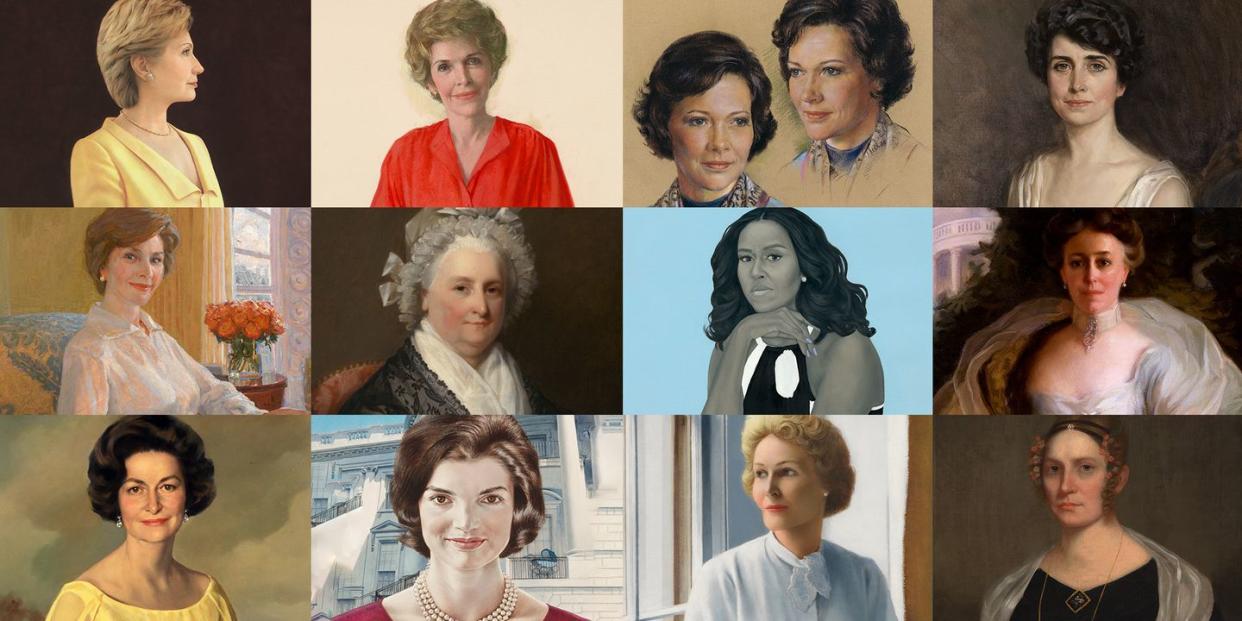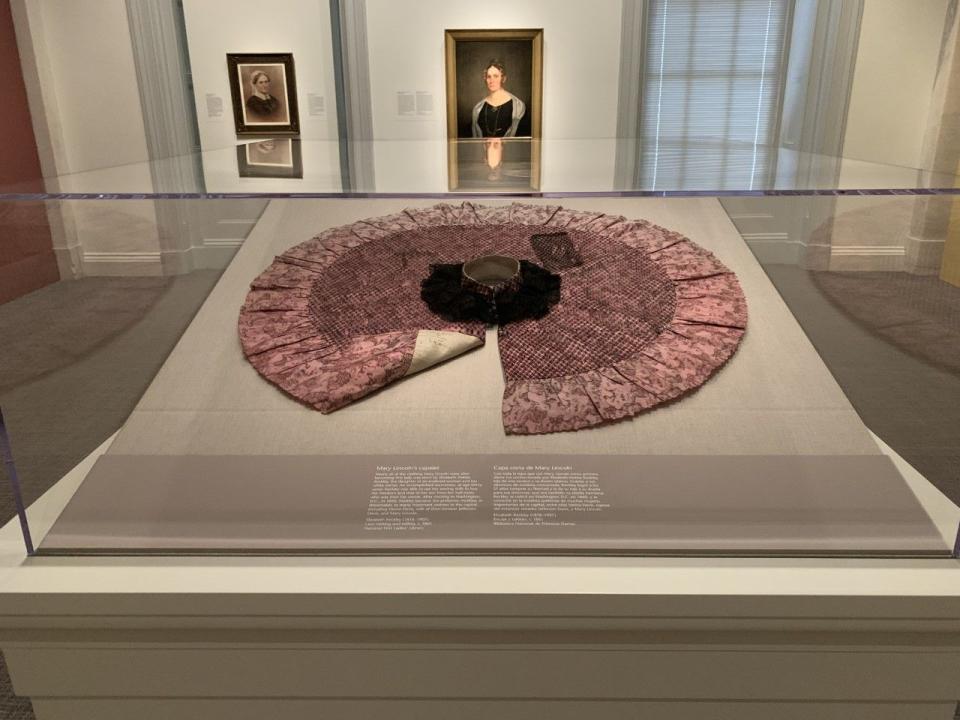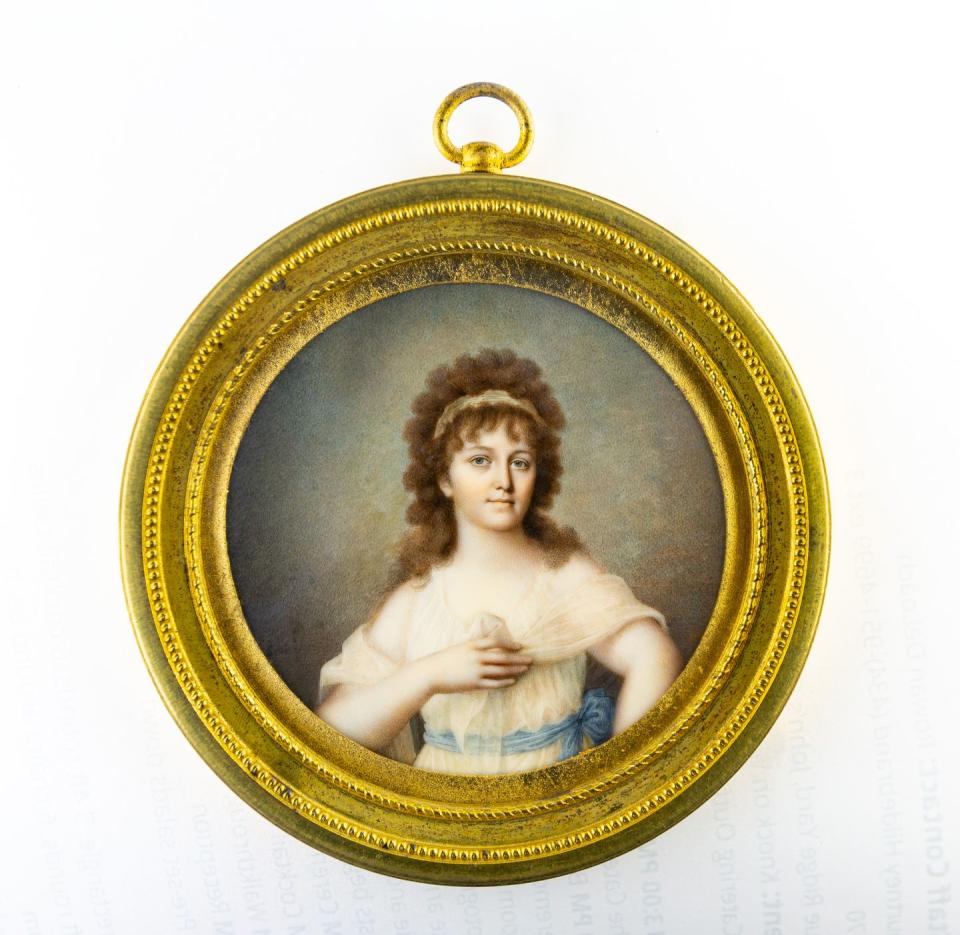A New Exhibition Explores the Evolving Role of the First Lady

The First Lady of the United States occupies perhaps the only full-time governmental job without a specific description—or a salary for that matter. But despite being a somewhat ambiguous, unpaid position, it's one that holds significant power. And this year, the National Portrait Gallery is exploring the complex duties of the first lady and how the job has evolved over 250 years, in a first-of-its-kind exhibition called “Every Eye Is Upon Me: First Ladies of the United States.”
The show’s title references a passage from an 1844 letter Julia Gardiner Tyler sent to her mother after she married President John Tyler. Used as a jumping off point for the exhibit, Tyler’s quote reveals a sentiment many first ladies share: there is enormous pressure and scrutiny in the undefined public role.

One of the exhibition’s main goals is to consider the sometimes unspoken rules the first lady must follow regarding how she dresses, acts, and exerts her discrete power. “Hostessing was really important,” says the gallery’s senior historian and acting chief curator, Gwendolyn DuBois Shaw. “We've been focusing on how we consider the roles of women in the 19th century that have been marginalized and the kind of soft power that these women exerted in hostessing.” Throughout history, first ladies have been responsible for bringing together politicians of different parties and finding ways to initiate conversation. “These were members of opposite parties who were not going to talk with each other on the floor of the House of Representatives, but would do so with a drink in their hand,” says Shaw, “It’s so important to the history of the country.”
Further, each first lady has had to determine for herself what she wanted to accomplish in the role. “These women have had to decide over the years where they want to direct their energy,” says Shaw, “because they can't do everything equally. And also, the responsibility of child-rearing in our society falls to women.” For example, Margaret Taylor went so far as to forfeit the social duties of the first lady to her daughter, Mary Elizabeth Bliss. (A few presidents—like Thomas Jefferson, Andrew Jackson, and James Buchanan—also had a standing first lady for reasons related to their relationship statuses.)

When it came to representing these women in the exhibit, Shaw utilized everything from 19th century full-length Grand Manner portraits to photographs, sculptures, and campaign buttons. In curating the show, she found she had a difficult time depicting every first lady in the same manner. “Many 19th century first ladies are represented in photographs,” she explains, “because women generally were not the subjects of formal portraits then.”
The contrast between the photographs and portrait miniatures of 19th-century first ladies and the life-size portraits of more recent ones shows how the perception of the role has changed—and more generally, how American women have. Now, first ladies like Laura Bush, Michelle Obama, and Jill Biden have advanced degrees, unlike those presidential spouses in the 19th century, who did not necessarily have access to formal education. “The lives of the first ladies really mirror the lives of American women in this regard,” says Shaw. “It's inspiring and really overwhelming to think about how each of these women has contributed to our history, how little we celebrate them, and how [the role of First Lady has] gotten to where it is today.”
“Every Eye Is Upon Me: First Ladies of the United States” is open at the National Portrait Gallery through May 23, 2021. A virtual version of the exhibition is also available online here.
You Might Also Like

